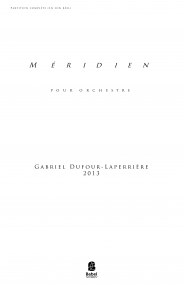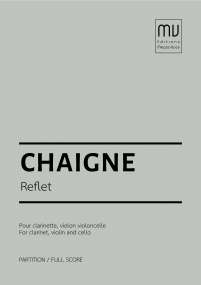The Muster-Book of the Dynamical Systems Collective
ISMN : 979-0-2325-5134-0
- Login to create your own lists
The starting point for this work was the Gavin Brown painting Narcissist given to me earlier this year in an exchange deal. One painting for one orchestral work. It got me thinking about Mussorgsky’s Pictures at an Exhibition and about the general idea of orchestral portraiture. I thought it could be fun to reinvestigate that genre of form. The actual painting triggered memories of Chaos Theory, not so much as the fractal images that that movement spawned, but more the underlying idea of challenging some fundamental classical scientific principles. I rediscovered the Dynamical Systems Collective a group of post -graduate researchers at Santa Cruz in the late 197o’s early 80’s and was struck by the quasi-religiosity of their mission. How faith and science converged. I have been intrigued by secular models of spirituality for several years. Gavin’s painting, which sees many events from different times colliding in the same room appears at first to be quite straightforward figurative painting. But the more time one sits before the work, the more one starts to see how warped perspective and time truly are. So too with the DSC’s work on the Lorenz Attractors. I opted then, for five orchestral miniatures, four as abstract portraits of each of the DSC and one extra for the Systron-Donner analogue computer on which they performed their experimental work. Miniatures for 0rchestra seemed appropriate, since the simplicity and scale of the DSC’s experiments had bigger and broader ripple effects in their field and beyond. The order of the works is irrelevant. They are conceived as five elements of one work that the conductor and orchestra can choose to perform in which ever order they see fit. This extension of Chaos into the form of my work, means that there are in essence 120 permutations for presentation of this work. Like the now disbanded collective, they can be viewed as a group that work well together but also as individual works that share acommon conceptual heritage.
Pages - 64






